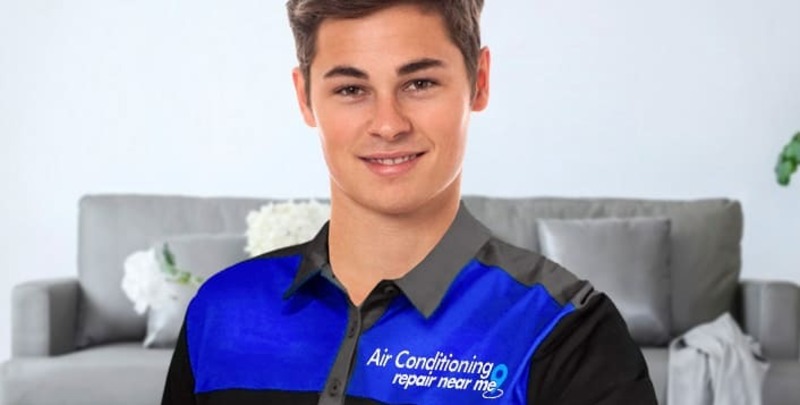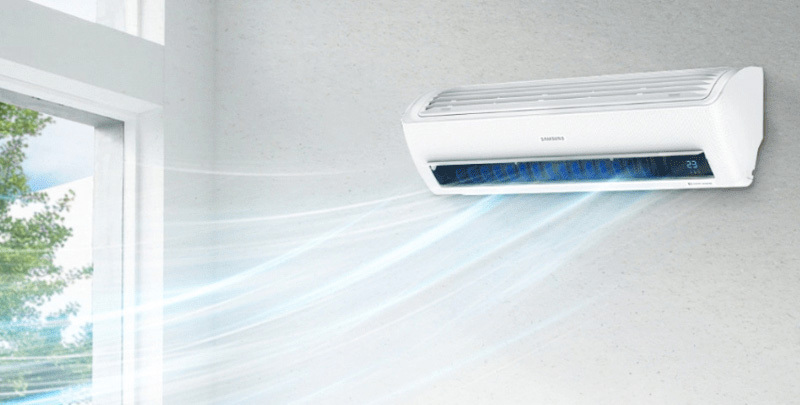Samsung Air Conditioner Troubleshooting: Problems and Solutions
Published on : December 12th, 2023

Stuck in a sweltering room on a hot Aussie summer's day because of a misbehaving air conditioner? If you're relying on your Samsung air conditioner to keep your room cool and cosy, then this blog has got you covered.
Let’s get to the nitty-gritty of Samsung air conditioner troubleshooting, and most importantly, how to seek professional help when needed.
Problem 1: Samsung AC Not Responding to Remote
Wondering why my Samsung AC is not responding to the remote? Well, this is a common problem you might face. There could be various reasons why your Samsung air conditioner may not be responding to the remote control.
-
Solution: Check the Remote Control Batteries
Start with the most obvious and simple fix – your remote control batteries. Often, poor battery power can lead to issues with operating the air conditioner. If the remote control has taken a bit of a knock, it might be worth giving the batteries a once-over.
-
Solution: Look at the Remote Control Sensor
The next thing to check is the remote control sensor. Now, this little thing is found in the indoor unit of your Samsung AC, and sometimes, dust or other obstructions might block it.
Problem 2: Samsung Air Conditioner Not Cooling
Is your Samsung air conditioner not cooling? Having your AC blow warm air is a bit like having a car with no wheels—it’s just not right!
-
Solution: Check the Cooling Mode
First, ensure your Samsung AC is switched to cool mode. Sometimes, you might’ve accidentally switched it to ‘fan mode’ or ‘dry mode,’ which might seem like the AC isn’t blowing cold air. Samsung AC indoor unit fan speed control board communication error code
-
Solution: Examine the Temperature Settings
Next, ensure your air conditioner’s temperature settings are correctly adjusted. You know, it needs to be just right! Not too hot when it should be cold, nor too cold when it should be hot.
-
Solution: Check the Outdoor Unit
Don’t just focus on your Samsung AC indoor unit. Remember to check the outdoor unit as well. A dirty condenser, or potentially some bit of debris stuck in the fan, could be messing up the cooling process.
Problem 3: Samsung AC Turning On and Off By Itself
Now, we all love a bit of magic, but not when it comes to our Samsung AC turning on and off all by its lonesome. This issue can make you feel slightly bamboozled.
The reason could be something to do with the power supply or auto settings.
-
Solution: Check the Power Supply
If your AC is haunted by power troubles, always check the power cord and the circuit breaker box. If your Samsung AC is continuously turning on and off, the power supply may be unstable.
-
Solution: Look into the Auto Mode
If your AC isn’t setting up shop in the Twilight Zone, it might be down to the “auto mode” settings. If the room temperature reaches the set temperature, the unit will switch itself off. But once the temperature rises, the air conditioner will burst back to life and start cooling the room like a champ again.

Problem 4: The Air Conditioner Does Not Operate at All
Caught in a situation where your air conditioner isn’t operating at all? Don’t fret! Here are some possible solutions to get it up and running again.
-
Solution: Check Connections, Circuit Breakers and Power Supply
Firstly, you should ensure that the power plug is properly connected. This can be achieved by firmly inserting the power plug into the wall socket.
Secondly, have a quick look at your circuit breaker for any issues. If it has been tripped or switched off, resetting it could resolve your problem.
Lastly, make sure there isn’t a power outage in your area affecting the operation of your air conditioner. If you are facing a power failure, you will need to wait for the power to be restored.
Problem 5: Temperature is Not Cool Enough
Feeling more warm than snug in your space despite having the air conditioner on? Here’s what you can do to ensure the room cools down as desired.
-
Solution: Tweak the Settings, Clean the Filter and Wait It Out
Begin by double-checking and making sure the selected temperature is set to low for optimal cooling. Inspect the air filter for any blockages caused by dirt or debris, as this can also have a significant impact on cooling efficiency.
It’s a good idea to consistently clean the air filter every two weeks to maintain optimal performance.
Lastly, it’s important to exercise patience. After turning your AC on, give it at least 3 minutes to reach the desired coolness. Combining these actions can help you improve the cooling efficiency of your air conditioner.
Problem 6: Foggy Air Flows Out
Are you noticing a bit of foggy air seeping out of your air conditioner? Don’t worry, it’s a common phenomenon and there’s a simple explanation for it.
-
Solution: Understand the Science Behind Cool Mode
When your air conditioner is operating in COOL mode, foggy air might flow out due to the rapid cooling of humid air in the room.
Problem 7: Noisy AC Operation
Air conditioners should purr, not growl. If you’re dealing with a noisy AC, let’s explore the possible causes and ways to hush that racket.
-
Solution: Identify the Source of the Noise
If your air conditioner is making noises, understanding the source can be pretty straightforward. For instance, a sound that mimics water flowing is often the result of freon coursing through the air conditioner unit.
Similarly, if you pick up a noise comparable to a shower, you can rest easy. This is typically the sound of dehumidifying water being processed inside your unit.
So, each distinctive sound you hear has a corresponding explanation tied to the workings of your air conditioner.
Problem 8: Condensation Leaking from Air Conditioner
Dealing with what appears to be water leaks from your air conditioner? It might just be condensation. Let’s delve into the issue and arrive at a solution.
-
Solution: Comprehend the Condensation Process
Recognise that condensation occurs when the airflow from the air conditioner cools the warm room air. It is a natural occurrence and should not be a cause for concern.
How Do I Reset My Samsung Air Conditioner?
To reset your Samsung air conditioner, you’ll need to first turn off the power at the main switch. Give it a bit of a breather (about 10 minutes should do the trick), before turning the power back on. Use your remote control to reset the settings – you’ve reset your AC!

Signs It’s Time to Seek Professional Services
If you’ve been through all of the above steps and your unit’s still acting up, it might be time to enlist the professionals.
If the indicator’s flaring up with error codes you’ve never seen like the following: E2, H5, E5, H4, E4, H3, L9, H5, PL, PH, HC, LP, Fo, F3, F4, F5, F0, E6, F1, F2, U7; if there’s an unusual noise, or; if it’s just not blowing any cold air at all, call up the experts and let them handle it.
Seeking Professional Help for Samsung AC Problems
Now, our tips above should help you understand more about your Samsung air conditioner’s hiccups. But, it’s essential to remember that when things start to feel a bit beyond what a good ol’ user manual can handle, that’s when it’s time to call the professionals.
It’s never wise to fiddle around with the internals of your Samsung AC unit. They’re complex bits of kit, and without the right training, you could end up causing more damage or even voiding your warranty!
So, for any serious issues, like connection errors, communication errors, and peskier error codes, always reach out to an HVAC professional or Samsung’s support services.
To a Cooler Home with Samsung Air Conditioner
With these tips and tricks, you should now have a fair idea about Samsung air conditioner troubleshooting. Remember, for any issues that seem grand, or if things go a bit pear-shaped, always contact a professional.
They’re there to help ensure your Samsung AC is running smoothly so you can enjoy a cool, comfortable home.
Forget the sweat and remember the pleasure of cool air hitting your face on a summer day!
Please note: This information is provided for advice purposes only. Regulations differ from state to state, so please consult your local authorities or an industry professional before proceeding with any work. See our Terms & Conditions here.